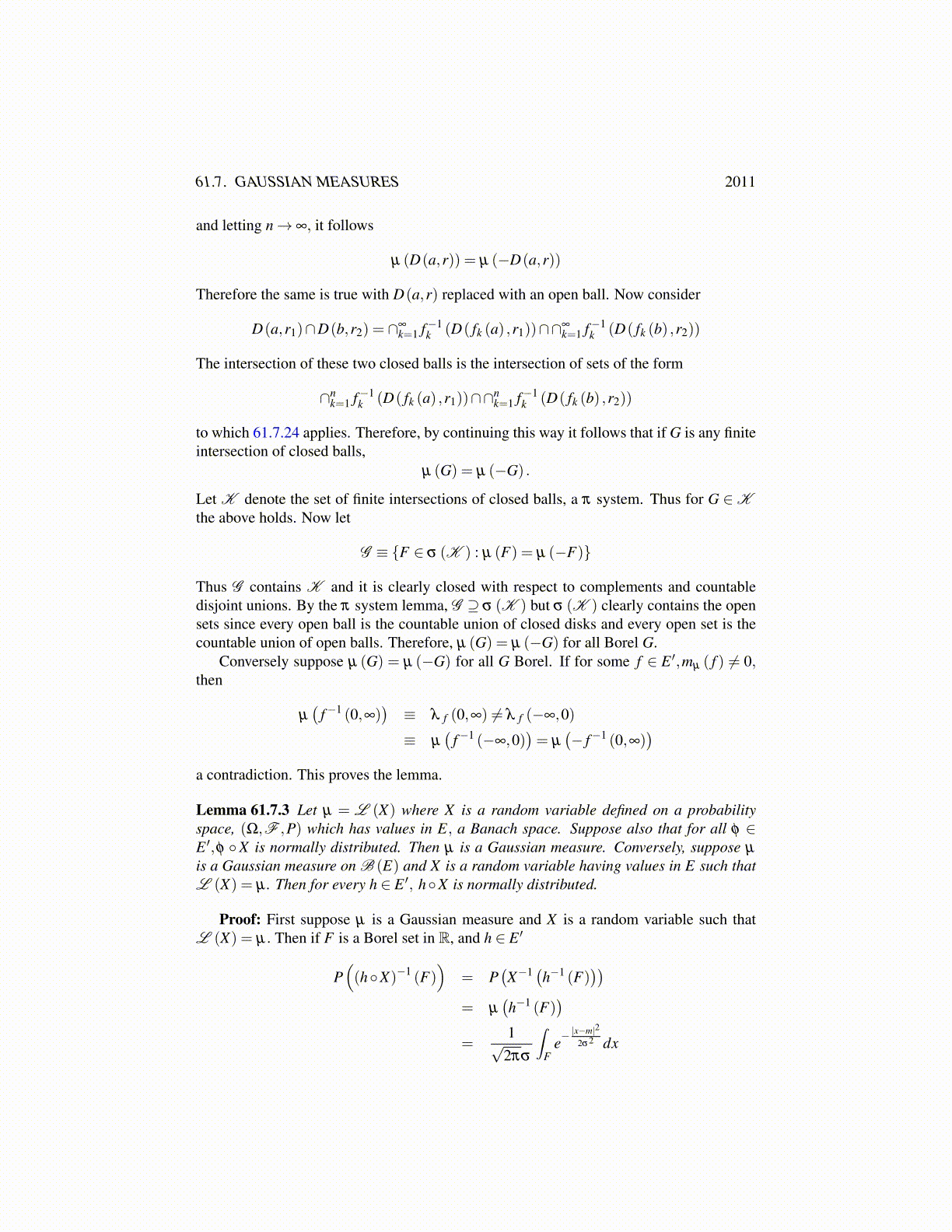
61.7. GAUSSIAN MEASURES 2011
Where the last equality needs to be justified. When this is done it will follow from Propo-sition 59.11.1 on Page 1891 which is proved on Page 1891 that X and Y are independent.Thus all that remains is to verify
E(eiu·X)= eiu·mXe−
12 u∗ΣXu, E
(eiv·Y)= eiv·mYe−
12 v∗ΣYv.
However, this follows from 61.6.23. To get the first formula, let v = 0. To get the second,let u = 0. This proves the Theorem.
Note that to verify the conclusion of this theorem, it suffices to show
E (Xi−E (Xi)(Yj−E (Yj))) = 0.
61.7 Gaussian Measures61.7.1 Definitions And Basic PropertiesFirst suppose X is a random vector having values in Rn and its distribution function isN (m,Σ) where m is the mean and Σ is the covariance. Then the characteristic function ofX or equivalently, the characteristic function of its distribution is
eit·me−12 t∗Σt
What is the distribution of a ·X where a∈Rn? In other words, if you take a linear functionaland do it to X to get a scalar valued random variable, what is the distribution of this scalarvalued random variable? Let Y = a ·X. Then
E(eitY )= E
(eita·X)
which from the above formula iseia·mte−
12 a∗Σat2
which is the characteristic function of a random variable whose distribution is the normaldistribution N (a ·m,a∗Σa) . In other words, it is normally distributed having mean equal toa ·m and variance equal to a∗Σa. Obviously such a concept generalizes to a Banach spacein place of Rn and this motivates the following definition.
Definition 61.7.1 Let E be a real separable Banach space. A probability measure, µ de-fined on B (E) is called a Gaussian measure if for every h ∈ E ′, the law of h considered asa random variable defined on the probability space, (E,B (E) ,µ) is normal. That is, forA⊆ R a Borel set,
λ h (A)≡ µ(h−1 (A)
)is given by ∫
A
1√2πσ
e−1
2σ2 (x−m)2dx
for some σ and m. A Gaussian measure is called symmetric if m is always equal to 0.